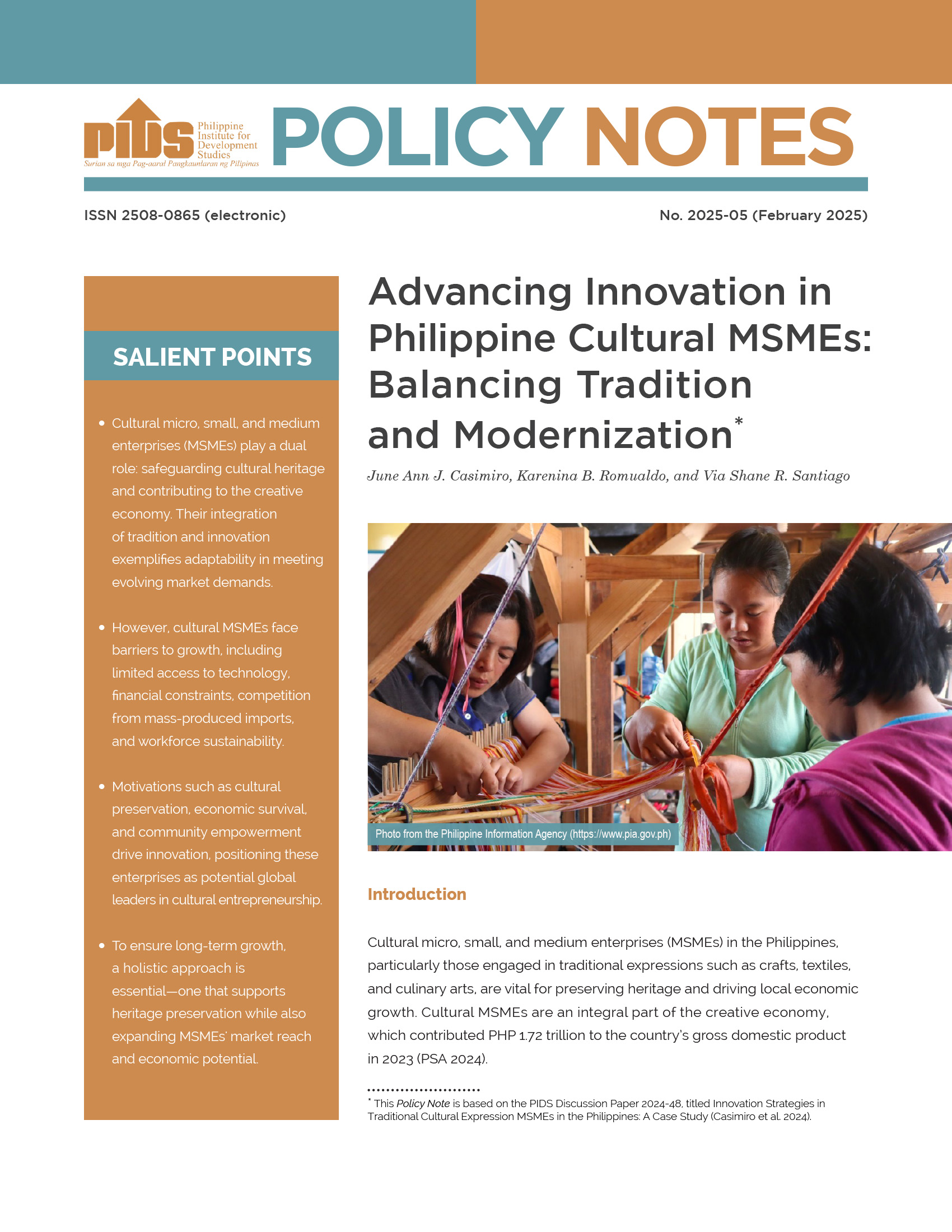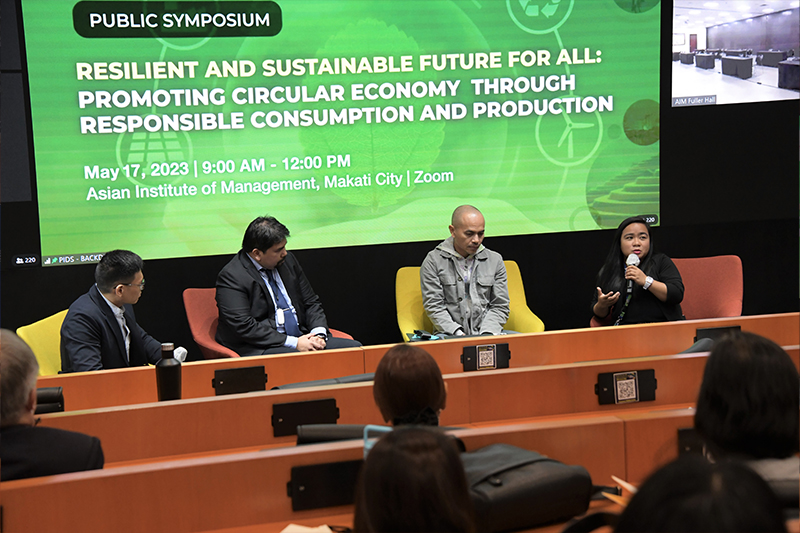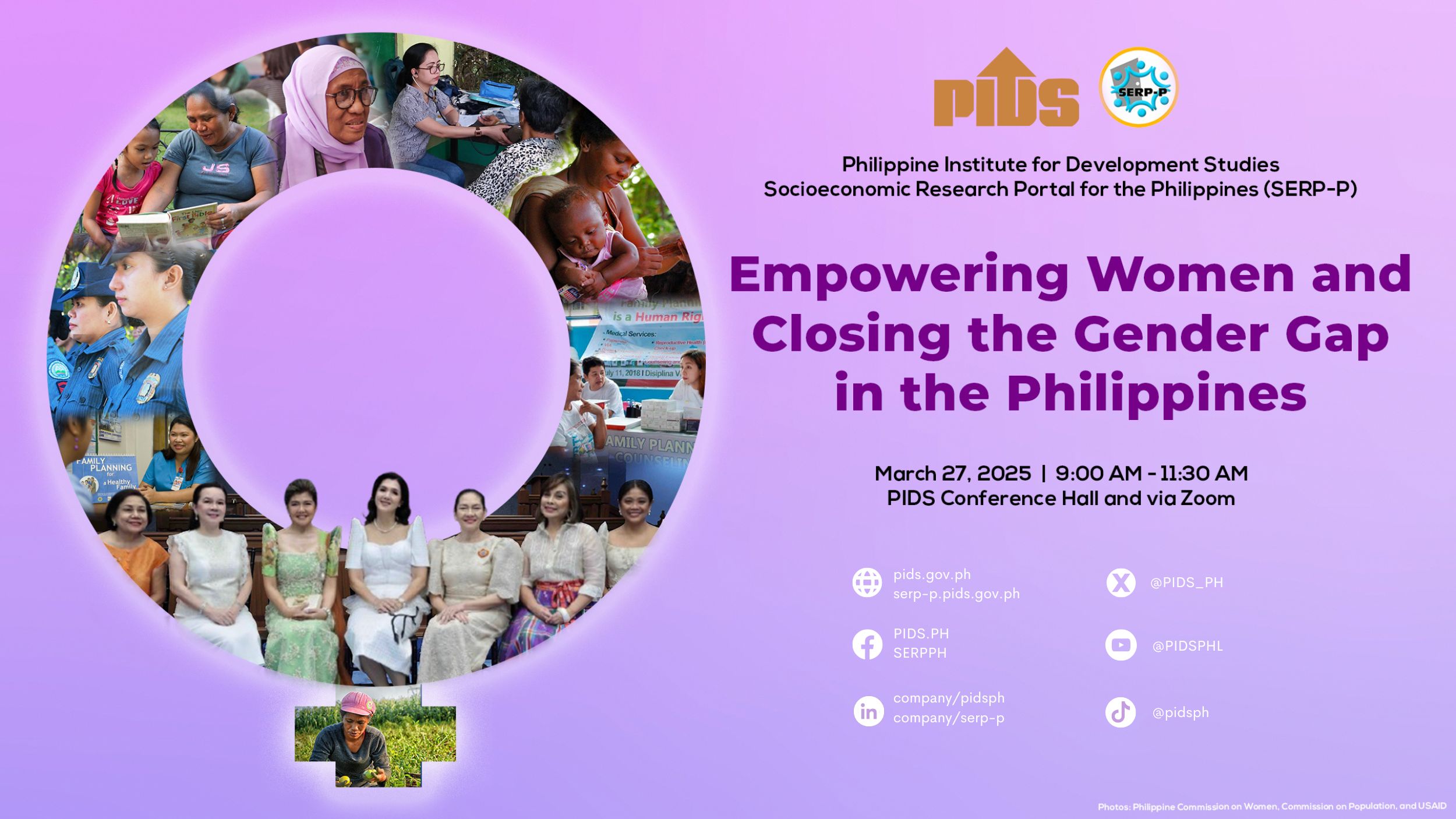MANILA, Philippines — The country’s gains in terms of diversity and inclusivity of export activities to the European Union (EU) are limited even as it is a beneficiary of the bloc’s trade preferences scheme, according to a study.
The study titled “Analyzing the Diversity and Inclusivity of Philippine Exports to the EU Under the GSP+ (Generalized Scheme of Preferences Plus)” said the economic incentives the country stands to gain from the scheme are limited.
In the study published by the Philippine Institute for Development Studies (PIDS), Trade administrative officer and author Brynn Jonnson Julia found that in terms of diversity of exports to the EU in the context of the Philippines being a beneficiary of the GSP+, some new sectors of exports to the bloc emerged such as footwear and headgear as well as animals and animal products, but the established sectors such as animal or vegetable fats, prepared foodstuffs, and machinery and mechanical appliances continued their dominance as the largest beneficiaries of the scheme from 2016 to 2018.
The GSP+ allows the duty-free entry of 6,274 products to the EU from beneficiary countries in exchange for compliance with international conventions on human and labor rights, environmental protection and good governance.
Julia said the three established sectors such as animal or vegetable fats, prepared foodstuffs, and machinery and mechanical appliances continued to benefit the most from the GSP+ because these have already made headway into the EU market.
For animal or vegetable fats, the Philippines serves as a source of coconut oil to the EU.
In terms of prepared foodstuffs, Filipino migrants in the EU, especially overseas Filipino workers account for a significant share of the consumers of these products.
As for machinery and mechanical appliances, Julia said these are sub-manufactured in the Philippines and directly integrated into the EU value chains.
“Despite a favorable demand-side condition (opening of the EU market through the GSP+), a supply-side impediment (anti-developmental political economy of the Philippines) was likely to have been highly influential in the process,” Julia said.
In particular, he said the economy does not only depend on transnational migration for remittances but also for its exports.
In addition, the country has an entrenched participation in global value chains as an effect of its reliance on investments from multinational firms and foreign firms.
Also cited for the limited diversity of exports are challenges in the capacities of exporters and supply chains.
The study also looked at the inclusivity of Philippine exports to the EU, or whether firms in emerging or established export sectors are geographically distributed in the country’s poorer regions or concentrated in wealthier regions.
“It is asserted that the inclusivity of Philippine export activity to the EU, much like its diversity, is limited,” Julia said.
The study found that Mindanao, the poorest part of the country, gained from exporting to the bloc, but it was limited to agriculture-based activities with low productivity.
Meanwhile, Luzon, the wealthiest part of the country, gained from both agriculture-based and industrial activities with higher productivity.
Many industrial firms opt to locate in Luzon as their activities require more developed logistics and infrastructure.
On the other hand, many of the firms engaged in the export of agriculture-based products to the EU are based in Mindanao as it has been a traditional base of many agricultural activities in the country.
Julia said factors that influence the inclusivity of exports at the national level include reliance on imports, foreign investment, and economic zones, which reflect the country’s economic liberalization policies.
“Meanwhile, interrelated factors at the subnational level are the capacity of island groups to implement structural transformation, which determines the nature and productivity of their export activities to the EU,” Julia added.












